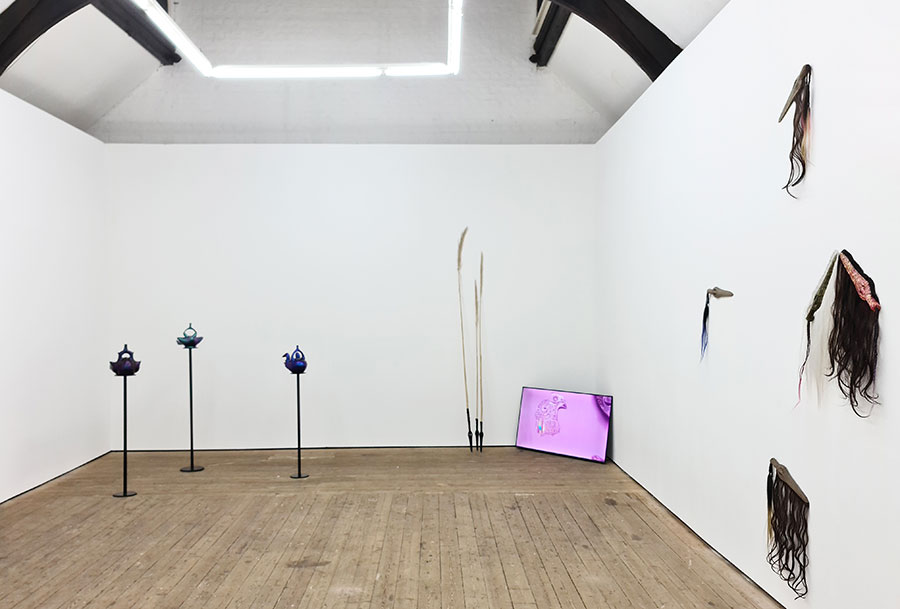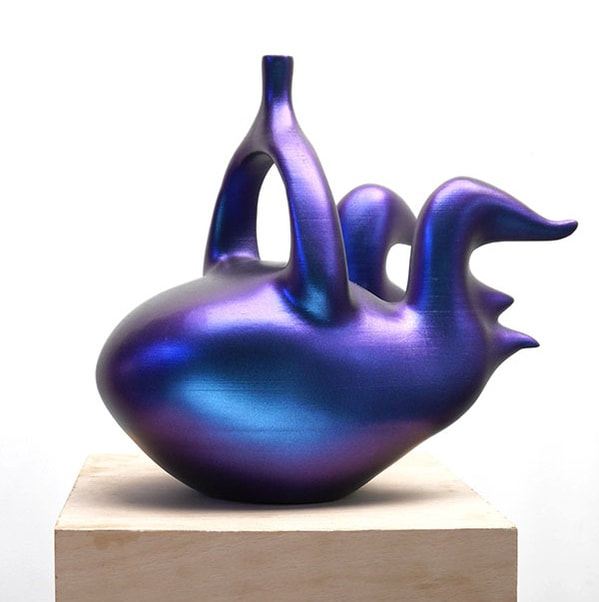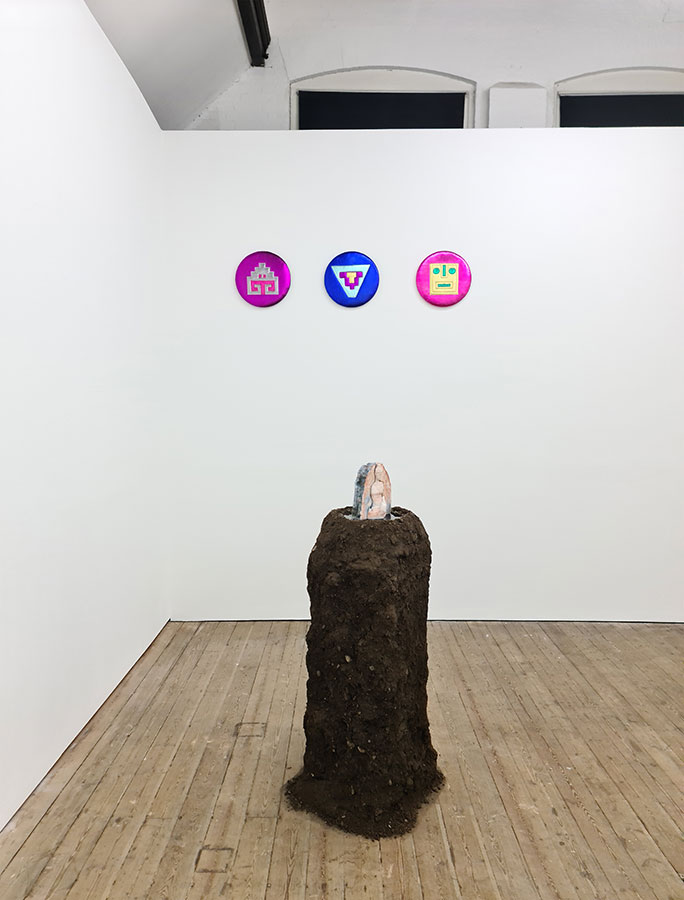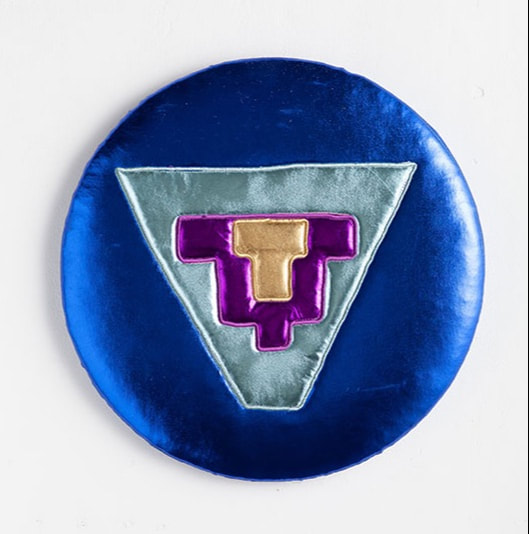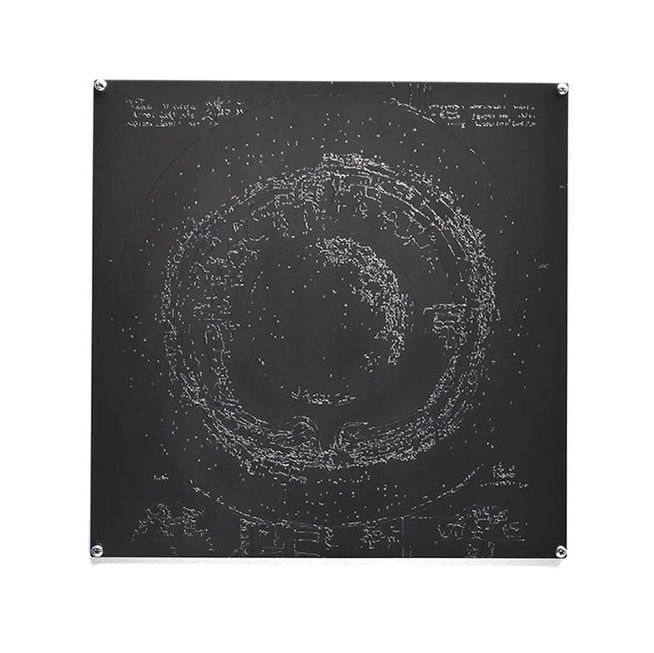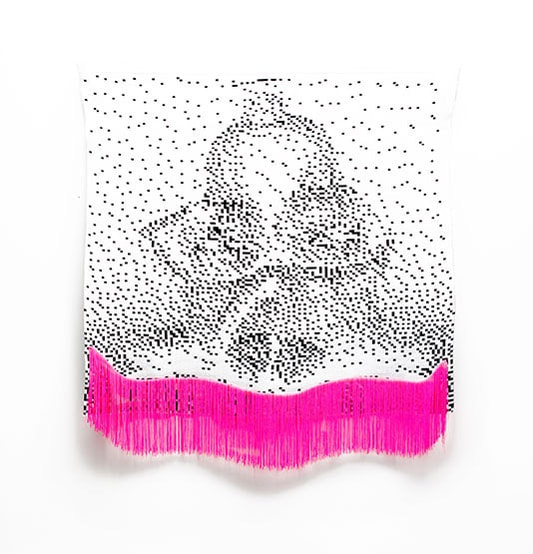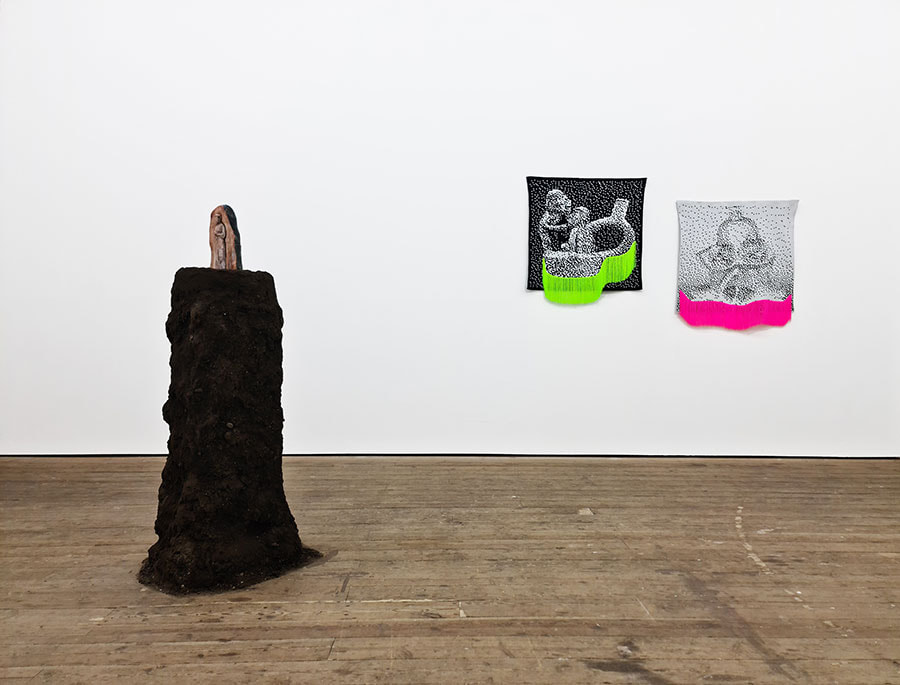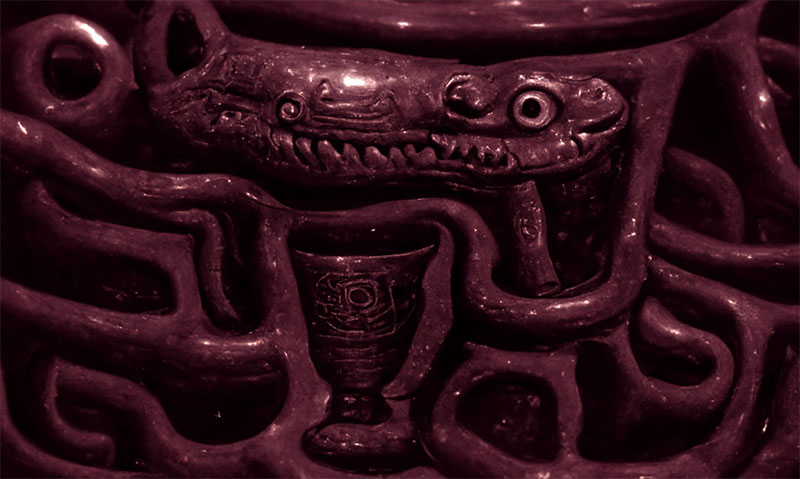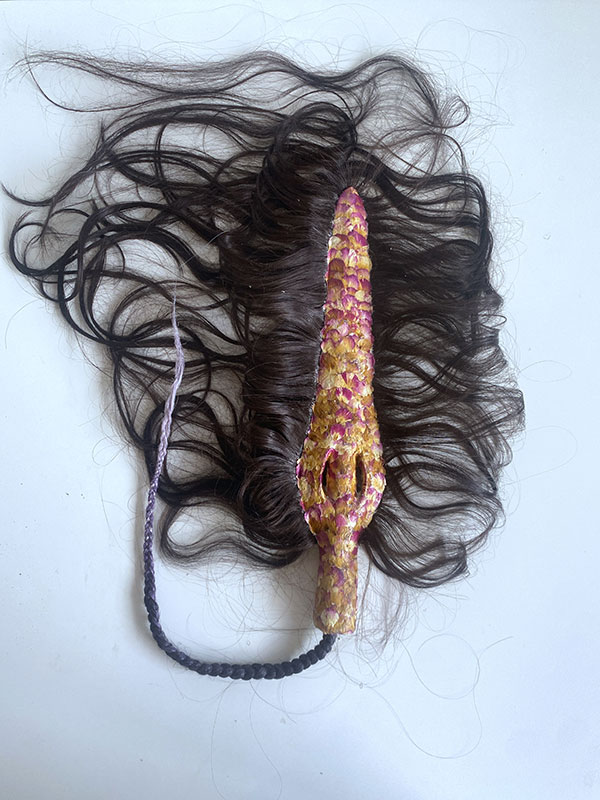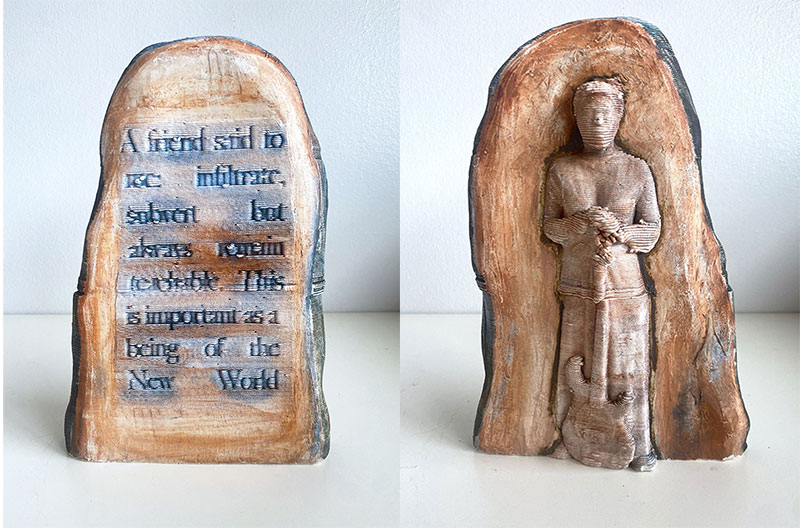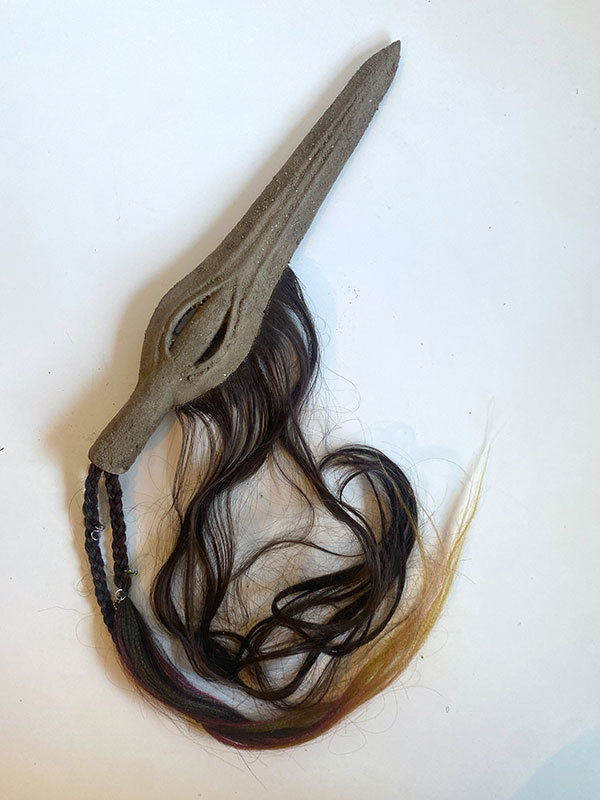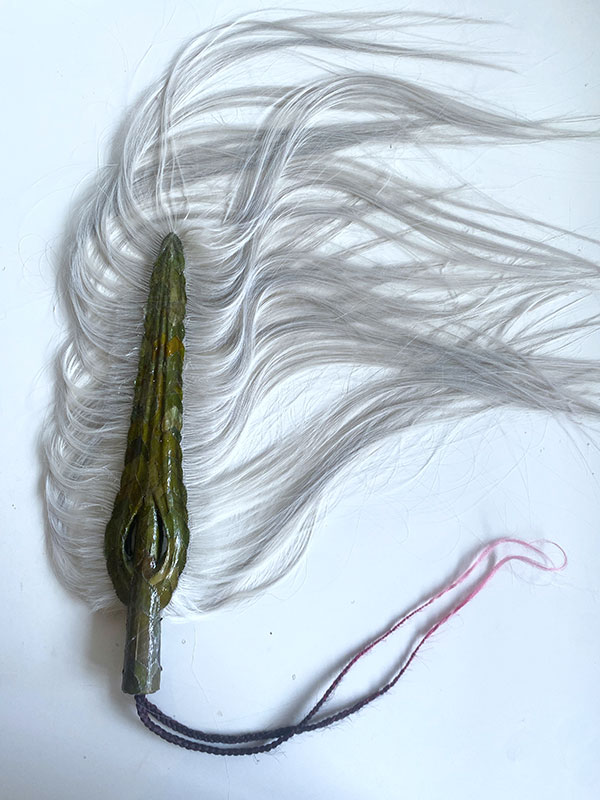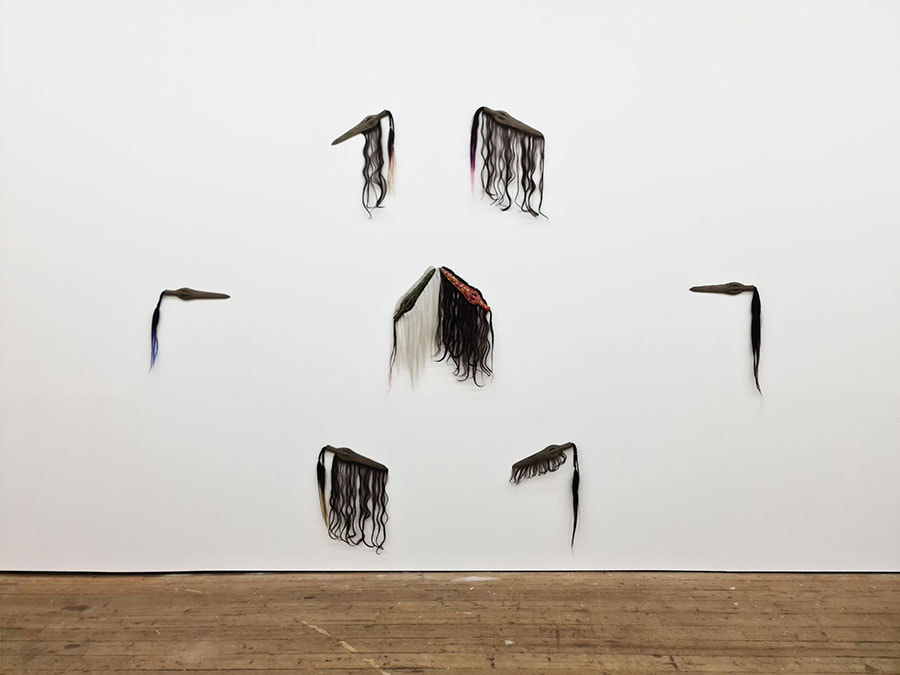Rebeca Romero, Maria Joranko: Oracles and Algorithms / 10 November 2022 - 28 January 2023
|
|
Copperfield, London is pleased to present Oracles and Algorithms, with works by Rebeca Romero and Maria Joranko.
Both Romero and Joranko reconfigure historical objects from non-western civilisations. Their works draw attention to the artifice of knowledge-construction, specifically that of the fabrication of historical narratives by self serving empires. They infiltrate and subvert those long-held narratives, yet do not seek to repeat those mistakes by imposing a strict alternative. Rather, their artworks urge us to remain open to hearing the myriad voices and processes of knowledge-creation, and to accept the scepticism that all ‘knowledge’ may simply be a form of superstition. Peruvian born, Romero’s practice explores the connections between technology and an often imposed Western vision of history, drawing on pre-Columbian cultures. In her newest work, using 3D scans of artefacts from the Chavin civilisation – a pre-Inca culture which flourished from 900 to 200 BCE – Romero raises questions about the production and exchange of knowledge, by combining pre-Columbian objects with new technologies. Reshaped and reborn, these objects have travelled through time and space, past and future, reality and dream. Romero’s altered artefacts draw our attention to the mysterious processes by which societies can come to accept certain ideas taking them for granted. The Chavin were governed by priests not kings, and it is believed that ritual hallucinogenic experiences played an important role in their development. Creating her new video-installation, Romero fed an “AI” Machine Learning programme (ML) with descriptions of ancient artefacts taken from museum labels which turned these texts into images. The resulting video is a vortex of ML generated images based on the narratives told by western powers. The hallucinatory effect prompts the viewer to question the legitimacy of those texts and the society which wrote them. Romero’s use of ML image generators draws attention to the fact that complex ML-produced results increasingly cannot be completely understood by humans. There is an undeniable mysticism to these neural networks, offering answers but no explanations. More dangerously, “... for the most part, we don’t care—so long as the algorithm performs ... We consult neural networks like the ancients consulted oracles.”[1] Romero’s engraved plaque Early Horizon materialises this mysticism of knowledge-formation and acceptance. She prompted a neural network with the existential question “imagine the cosmos, imagine how the ancients understood their place in the world’ laser engraving the result. This futuristic artefact embodies our anxieties about what we do not know about the extent of the cosmos and reminds us that different forms of intelligence and different cultures have unique visions of this phenomenon. Maria Joranko, explores in her own terms the mysticism of knowledge-creation and the potentials for making a new future, based on the inclusion of narratives from other eras and cultures. Latinx/American artist, Joranko aims to re-energise us with a newly found connection to our history, our selves, and to what she sees as the true container of all consciousness: Earth. Her interest in the natural Earth is informed by Joranko’s reconnection with her ancestors’ heritage and research into plants and decolonial land practices. Here natural and organic materials are valued as vessels of knowledge. Her work is imbued with an anthropomorphic quality: the artificial and the natural overlap to create uncannily live objects. Making weapons using modern technologies, 3D printed blades and spears are adorned with hair, rose petals and earth. Though 3D printed these weapons are reminiscent of ceremonial artefacts from Latin cultures and they mutate into relics-from-the-future that we are trying to understand today. Coated in loam, they are rooted in life and propose a different future more respectful of the earth and those that live there – regardless of species, race, gender, sexuality, or culture. The idea that knowledge can be stored in, and articulated by, the non-human is reinforced by Joranko’s series of inscribed 3D printed ceramic slabs or ‘stele’.[2] These steles are premonitory reminders that we will leave artefacts from our civilisations; stories encoded in objects. Joranko takes the pan-cultural stele tradition and injects the present and personal into it. The ancient practice of making in clay is updated here, as her image is precision injected alongside her texts at the control of a computer. There is a forward momentum to these steles whose unusual composition speaks of knowledge-survival through the interaction of cultures’ differences. Alchemically embellished with fired oxides, these surfaces prompt us to remember and thank those past civilisations upon whose technological developments ours stand today. The clay exterior literally and figuratively encases and preserves the modern technology. Knowledge systems do not exist in a vacuum, nor do they have to overwrite one another as western narratives often present. Rather, past cultures’ technologies are embroiled within all that remains today and on into the future. [1] The Other Side: Algorithm as Ritual in Artificial Intelligence, Browne, Swift, April 2018 [2] Stele: an upright stone or slab with an inscribed or sculptured surface, used as a monument or as a commemorative tablet in the face of a building, such as the Rosetta Stone. - Rebeca Romero (b. Lima, Peru, lives and works in London) Romero’s practice spans sculpture, textiles, writing, sound and performance. She creates objects, texts and installations that challenge the dominant historical narrative of the clash between Indigenous and European cultures. Often combining Pre-Columbian iconography with advanced scanning and printing technologies and materials ranging from clay to plastic, her works swing drastically between the past and an alternate future. Online museum archives become an excavation ground for the collection of data, that she later recontextualizes, reassembles and re-presents. With a focus on new materialities, processes of production and collaboration between artist and machine, her work seeks to question ideas and practices of representation, appropriation and authorship. Romero received an MFA in Fine Arts from Goldsmiths College, University of London (2020), and she is a recipient of the Arts Council of England ‘Develop Your Creative Practice’ grant (2021). Selected exhibitions include ‘Promises from Paradise’ The New Bridge Project, Newcastle (2022), ‘Post-Khe’, Brutal, Lima (2022) ’Bloomberg New Contemporaries', Firstsite, Colchester & South London Gallery, London (2021), ‘The Obsolete in Reverse’ solo, Springseason Gallery, London (2020), ‘London Grads Now,’ Saatchi Gallery, London (2020), ‘Pou sou Nefko Pou Paeis’, Korai Project Space, Cyprus (2020) & ‘The one that’s always there, the one that came late, the one that never arrived, the one that wasn’t invited’, SB34-The Pool, Brussels (2019). Her text/sound work has been featured in platforms like New Writing with New Contemporaries, South London Gallery, London (2022) and Future Artefacts, RTM.FM (2021). - Maria Joranko (b. South Dakota, USA, lives and works in London) Maria Joranko is a mixed media artist and performer, dancer, musician, and researcher who is specifically interested in examining how healing, transformation, and change can be presented as possibilities within an arts context. She is currently based in London where she maintains a practice that is integrated with meditation, bodywork, and sculpture, while using soil and plant based materials as the main conduits for connection with the Earth, ancestors, and those who are yet to come. Maria draws on carried knowledge from her Latinx, American, and Indigenous biological+chosen family, her research in decolonial land practices, and racial activism experiences to create objects that are relics from a potential future that has sustained equity and sense of magic connection. Maria was formerly based in Columbus, OH and while there, was a member of MINT collective and artist in residence at Cartpushers. Currently she has completed her MFA from Goldsmiths (2022) and is the 2023 recipient of the Acme Award, Bursary, and Residency. Her work has been shown internationally in i know it’s the end & I am full of beauty (2021) at Beeler Gallery at CCAD and #SpeakingThroughMasks (2020) at ABCNoRio in NYC and not to be a singular being at Chisenhale Studios (2022). Upcoming shows in 2023 include Arthouse Wakefield, San Mei Gallery, Slash Arts, and Below Grand (NYC). |
